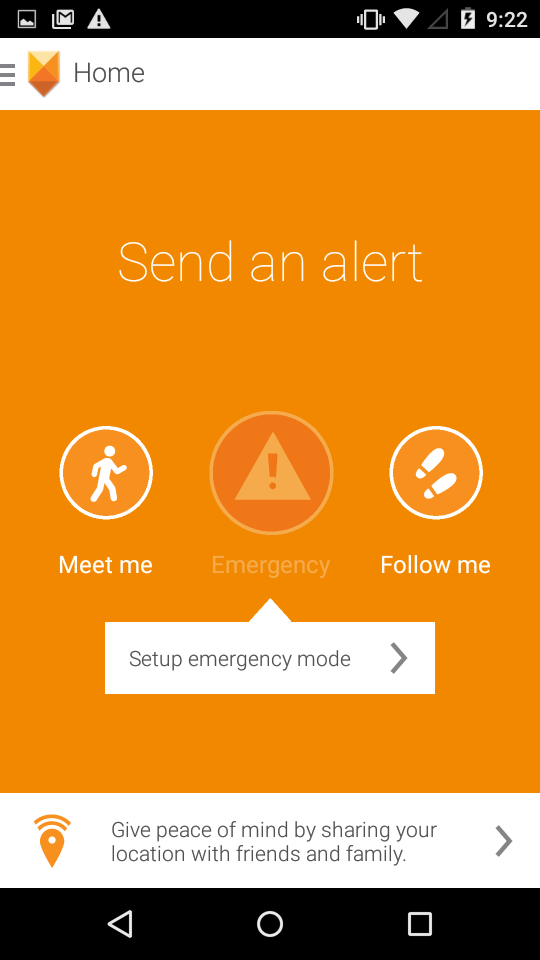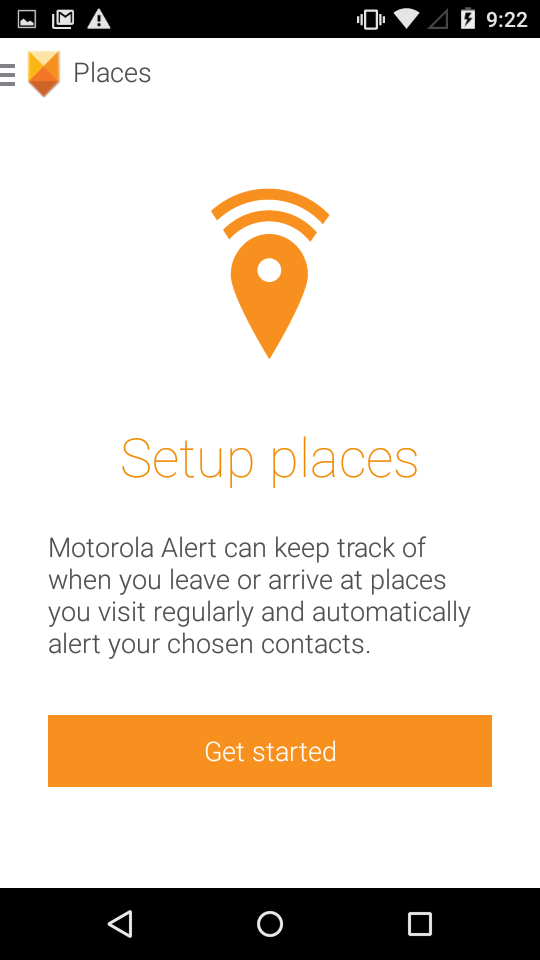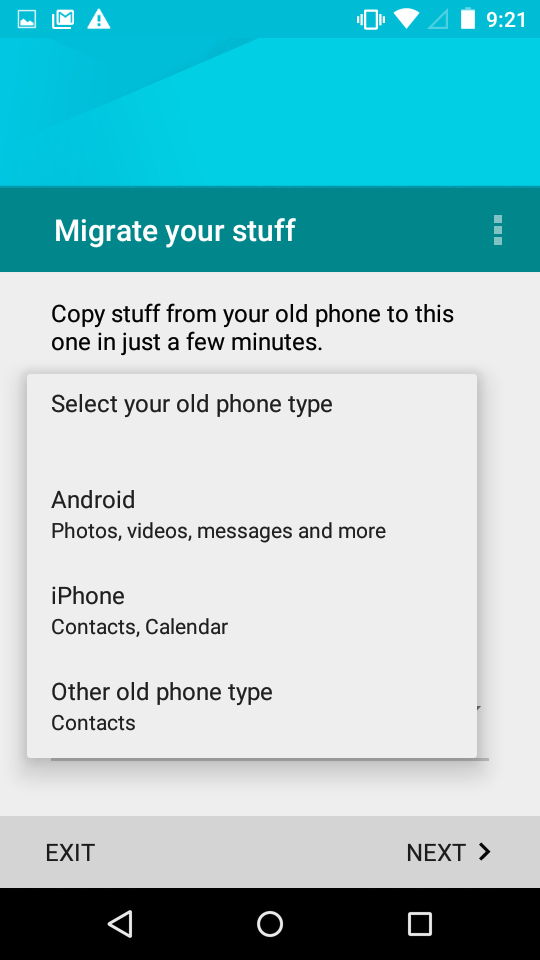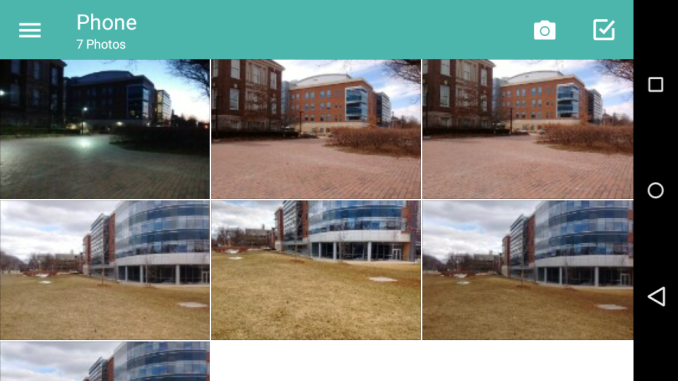The Moto E (2015) Review
by Brandon Chester on April 21, 2015 8:00 AM EST- Posted in
- Smartphones
- Motorola
- Mobile
- Moto E (2015)
Software
Long ago, Motorola devices shipped with a custom Motorola UI known as Motoblur. It was one of the heavier custom Android interfaces, with many applications and widgets being included in addition to skinning the entirety of the Android interface. Naturally, it was also heavily criticized for slowing down devices and filling up storage with pre-installed applications. Over time Motorola reduced the amount of modifications they were making to stock Android, and by the time Google originally purchased Motorola Mobility before selling it again they had moved to shipping devices that were the closest to stock Google Android that you could find on a non-Nexus device. For the most part, you can find out about the Moto E software experience just by looking at our Android Lollipop review. That being said, Motorola does add a few apps and features to Android, and that's what I'll be covering here.
Motorola Alert is one of the first apps you'll see on your phone since the app drawer organizes your apps alphabetically. The app has a few different functions, and on a fundamental level it's really an app for keeping other people updated with where you are. This has fairly obvious use cases such as for elderly people and small children. When you set up the app, you'll be asked to pick some of the people from your contacts to be used as emergency contacts.
The Meet me button allows you to send a text message to some or all of your emergency contacts with a location that you are presumably travelling to and a prompt to meet you there. The Follow me feature is similar, but it instead periodically broadcasts your current location on a interval that you can specify in the settings section of the app. The Emergency button will send a special emergency message to your emergency contacts, and it will also bring up a button to either call your local emergency services number or a designated contact. You can also opt to have that number automatically dialed, and there's also an option to sound an alarm from your speakers to let anyone in the vicinity know you need help.
Motorola Migrate is another thoughtful app included by Motorola. It allows you to transfer much of your content from your older Android phone to your new Motorola device. While your Google account already allows for the transfer of things in the cloud and your applications, it doesn't move over your text messages or local photos and videos. That's where Motorola Migrate comes in. It supports transferring messages, photos, videos, music, contacts, and call logs from other Android devices, as well as contacts and calendar info from iOS devices.
When moving content from another Android device, you simply download the Migrate app on that device and scan a QR code which will be displayed on your new Motorola phone. This initiates a transfer of your files over an ad-hoc 802.11 link between the two devices, and once the transfer is complete you're ready to start using your Motorola phone. The procedure for iOS is a bit different, and it involves signing into your iCloud account which I'm just a bit wary of as you're signing into iCloud on a non-Apple device, and the migration service is actually powered by a third party company rather than Motorola. While it's most likely safe, I tend to err on the side of caution when using my Google account or Apple ID with any third party service.
Motorola has also seen fit to include their own gallery application. The reason I'm a bit confused about this is because the Moto E still ships with Google's own Photos app, and you can't remove it. Motorola's gallery isn't any worse than Google's app, but it doesn't really improve on it either. It even has the same issue of low resolution thumbnails that Google Photos does. Normally I wouldn't mind and would just hide the app, but on an 8GB device with only 5GB available to the user it's really frustrating to have a second gallery application taking up 45MB of space on the phone.
The rest of the software experience is really the same as you'll get on a Nexus device. Moto Display is a cool feature, but when your device uses an LCD instead of an AMOLED panel the power saving benefit of the dark appearance is lost. For me Moto Display isn't really a notable improvement over the standard Lollipop lock screen and how it displays notifications.
Moto Display also seems to be introducing a bug when picking up the device. The Moto Display screen will be shown briefly, and then the screen will show the launcher before suddenly drawing the standard Android lock screen. This represents a potential security flaw and I hope it will be fixed alongside a future Android 5.1 Lollipop update. I've also encountered some issues with memory usage causing the launcher to be evicted from memory. While the device is memory constrained, the memory management issues in early Lollipop releases are really Google's problem so I can't fault Motorola for it.















90 Comments
View All Comments
Kristian Vättö - Tuesday, April 21, 2015 - link
Buying goods internationally is always more hassle. First off, there's customs fees that may increase the total cost quite significantly. On top of that there's always a concern regarding warranty because if the OEM has no presence in your country, you may have to ship it to another country that increases waiting time and may even cost you.erikiksaz - Tuesday, April 21, 2015 - link
I was under the impression that xiaomi phones don't have all the proper bands for T-mobile. Is this not true?hans_ober - Tuesday, April 21, 2015 - link
Any front camera samples?Did you try charging it using a Quick-Charge 2 charger; or even another normal charger with a high amp rating?
How good (or bad) is multitasking on the phone due to only 1GB RAM?
Brandon Chester - Tuesday, April 21, 2015 - link
The original release of Lollipop has some memory issues of its own, but I never felt like there were problems with multitasking due to the limited amount of memory. There's definitely more app reloading than on the Nexus 6 but it's not a big deal.hans_ober - Tuesday, April 21, 2015 - link
Thanks, aren't you guys gonna share front camera sample pics?It might not be great, but I was curious to see how good/bad it is.
piroroadkill - Tuesday, April 21, 2015 - link
It's funny that we're talking about a PHONE having "ONLY" 1GiB RAM, when I vividly remember that being a shit-hot amount of RAM for your desktop PC.That aside, I don't see Moto E as a hardcore multitasking phone anyway, it's just a decent phone with a reasonable set of specs for someone who isn't that hardcore of a smartphone user.
hans_ober - Tuesday, April 21, 2015 - link
Times change :) When it comes to PC's I think 4GB RAM is the minimum that should come with a new PC, anyone planning on multitasking needs more. When it comes to laptops like the Surface and MBP, they should be including 8GB atleast: the iGPU uses a portion and that reduces things even further.mkozakewich - Wednesday, April 22, 2015 - link
No, times have changed yet again. A PC should have 1 GB at the very least, with 4 GB being a good amount. Most of these kinds of computers have SSDs, which are a lot faster with their page files. You can swap without too much delay, so you don't actually need much RAM. I've been surprised at how well the 1GB Stream 7 performs, despite Windows 8 taking up about a gigabyte on boot.(If you use Chrome heavily, tack on an extra 2 GB. All those tabs really add up.)
hans_ober - Friday, April 24, 2015 - link
Don't page file read/writes have a negative impact on the life of SSD's?blzd - Thursday, April 23, 2015 - link
My desktop PC has never gone above 6 GB of RAM usage, that's while playing a Shadows of Mordor while streaming twitch and Spotify in the background.